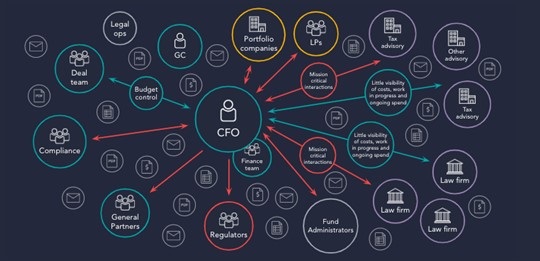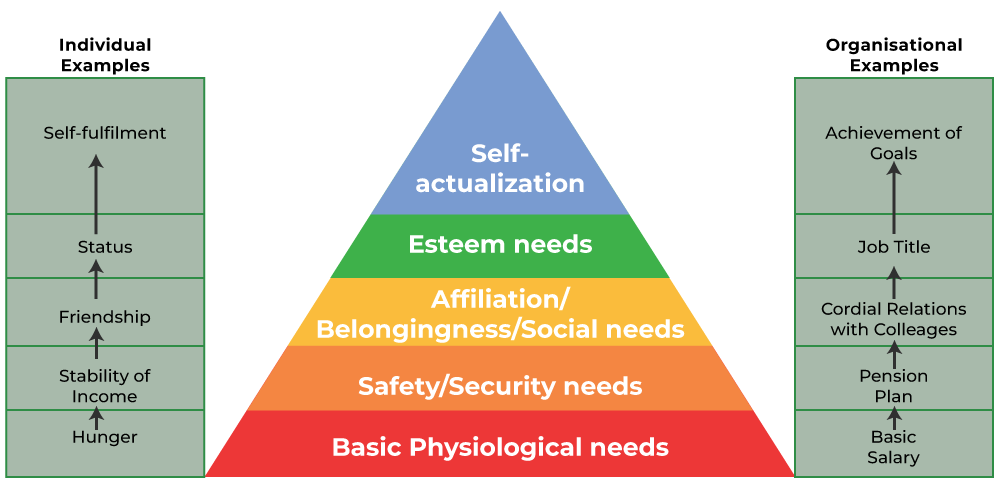Watch a summary of the workbook
Background
The staff dining hall at Volkswagen’s HQ in Milton Keynes is a hell of a place to learn your first important lesson in selling B2B SaaS software. But it was there that it happened.
It’s October 2001 and we’re having lunch with the HR Director at VW Group. He was piloting 4th Contact, our online benefits platform, that gave every employee a summary of their total rewards statement. We believed that showing employees their salary AND their benefits (such as pensions, life cover and health care) all configured on the internet in the company livery, was a game changing solution. We just couldn’t figure out why only a handful of companies had bought it! We’d had far more no’s than yeses. We’d raised a load of cash, spent tens of thousands of pounds on marketing, we were good at sales and yet…nothing. Incredibly, and fortunately, it took a customer to tell us why.
“I’ve always wondered,’ our HR Director said between mouthfuls of lunch, ‘why the lead message on your product is the pretty front end of your platform and not the incredibly useful back end? Don’t get me wrong, the front end is nice to have. But managing employee benefits is an admin nightmare for my team – joiners, leavers, pay rises and holidays. It used to take my team three days to do the job each month – with your system it takes one person a third of a day.’
I nearly choked on my heavily discounted lasagne. The light bulb came on and, in an instant, I knew we’d been selling our software with the wrong lead message. We hadn’t done our research properly and it took a client to tell us where his organisation was really feeling the pain.
Might it be time to look through the other end of the Telescope?

Back to the drawing board
Here we learned our first lesson. When trying to scale a SaaS business it might be a good idea to spend time with your clients to deeply understand where their internal process was broken and what their real challenges and pains were. We’d fallen into the trap of thinking we knew what was hurting – in this case poor benefits visibility – and not actually understanding that his real pain was the time his team was wasting on low value administration. Our proposition became a much harder message of ‘save time and money’ and not ‘improve employee retention’. Within a fortnight of that meeting we had rebranded, overhauled our product messaging and went on to close The London Stock Exchange, Tyco, Hasbro, Warner Brothers and the Walt Disney Corporation amongst many others.
The problem with your existing value proposition
It’s amazing how often we retell this story to our clients more than two decades on. Reconfirming the core Value Proposition with existing clients, prospects and other people in your network is something that every Founder should do at least twice a year. But for many customers we work with, regularly checking in with their clients and prospects is something many seem reluctant to do. Perhaps there is some fear around speaking to clients based on concerns about the renewal or a difficult customer experience they may have endured. Founders often leave all client engagement to their customer services team, and we think this could be a mistake. All the great software businesses have a Customer Advisory Board that meets two to four times per year – we’ll cover this subject off later in the book.
The principal problem with Value Propositions is that they change over time. New competitors enter the market making the once unique solution you sold more commoditised. Pricing gets squeezed and as with any new product one buys, the initial excitement and value begins to wane. And we have discovered over the years that if a software business is not scaling as fast as stakeholders would like, one central symptom could be that the Value Proposition has somehow become blunted and often misconstrued.
 Occasionally focus is only pointed at the business benefits their software brings and does not investigate a deeper layer of personal pain and frustration that exists within your buying persona. At Volkswagen, in our example above, the real pain he felt was for his team and their ongoing frustration with trying to administer benefits for hundreds of employees.
Occasionally focus is only pointed at the business benefits their software brings and does not investigate a deeper layer of personal pain and frustration that exists within your buying persona. At Volkswagen, in our example above, the real pain he felt was for his team and their ongoing frustration with trying to administer benefits for hundreds of employees.
That’s why the starting point of this book, and indeed the starting point of every engagement that we have with our clients today, is to clarify and then reconfirm the Value Proposition. This should certainly be with existing customers but also involve pipeline prospects and indeed anyone else in the network that can help us understand the challenge better.
So, let’s look at a simple process that can be followed by all SaaS businesses (whether new or old) that will reconfirm the Value Proposition and provide a critical springboard for future growth.
Step 1: Building the pain statement internally.
You might believe that everybody in your organisation truly understands the value your software brings to your clients and there’s 100% alignment and clarity. However, the reality is that over time, team members can get woolly and confused about your armour piercing message set. Different departments (sales, marketing, product, development) might see your solution’s value in different ways. And there may be a lack of consistency between your website, sales collateral and other market facing content.
As an aside, I can’t tell you the number of times we’ve looked at a software company’s website as part of our own Discovery and, even after 15 minutes of exploration, still not understood what it is the organisation does. Prospects won’t give you that 15 minutes – they’ll move on. Too many websites explain what their software does and how it does it, rather than explaining the why – the visceral business benefits that their solution can bring. Steve Jobs gave us all an important clue here when he designed and created hardware that was simple enough for a 7 year-old to use. We need to do the same with our messaging within B2B software. Try it out with any 7–10 year-old you have to hand. Do they understand the value your website brings to your customers?
Articulate with clarity
It’s critical that your business’s Value Proposition is crystal clear and simple (think 7 year old) and really touches a nerve of recognition with any customer that visits your website. Why spend thousands of pounds on expensive Pay Per Click campaigns if, when your prospect arrives there, they simply don’t understand the value you can bring?
And if the message is not clear to your own team, then when it’s projected onto the eyeballs of a prospective customer, the magnitude of confusion can raise exponentially. That’s why it’s critical to get the story completely straight internally first.
Visualise the pain
We’ve always believed that a picture paints a thousand words and so very often our starting point is to create some kind of visualisation that explains the broken or inefficient process that your software solution looks to solve. We call this the Pain Slide. This is a great way of getting your whole team’s input about where they see the value of your proposition and gaining confirmation across the board about the pains your software solves.
The best way to make sure everybody in your organisation is on the same page is to gather your product, sales, customer success and technology teams in a room with a whiteboard and a brand-new set of coloured markers. Think of an ideal customer who you believe you can help (we’ll explore the Ideal Customer Profile concept in a later chapter) and draw at the centre of the whiteboard the Buying Persona, you believe you offer most value to today. This could be the Chief Financial Officer, the HR Director, the Marketing Director, whoever. To the left of the Buying Persona, draw in all the internal actors that are engaged in the process that your software makes easier. This is normally other departments within the business and their C or D Suite leaders or colleagues that are affected day to day.
To the right of the buying persona draw in the external actors that are involved in the process, for example suppliers, regulators or other business partners. Now draw in the process flow, showing at every stage the business challenges this organisation is facing with their current process and which departments either internal or external are being affected the most. Add in the business pains they are feeling – is it a poor process, a mass of Excel spreadsheets, or a huge amount of wasted time. What software are they currently using to solve this and which colleagues in particular are suffering the most.
This image once completed is supposed to look a mess – the untidier the better to be honest as we’re trying to illustrate something that is broken and inefficient. Ensure every member of the team feeds into this diagram so that every angle is covered. Two examples of Pain Slides can be found below.


As you can see in both examples, the images are confused, untidy and highlight a huge number of challenges across the organisation. We’ve used arrows, different colour palettes and bulleted messages to highlight where the principal business pain is being felt. In the next chapter will look at how we’re going to test this message with customers, prospects and anyone else in our network that we can find to verify our thesis.
But for now, there are two other steps that can be taken internally by your team which will stack the odds in your favour of really hitting home with your revised value proposition and product messaging.
Step 2: Make it personal – adding in personal pain
Let’s be honest, asking a business to part with £50,000 per year in return for a brand-new software product in the current economic climate may not be a trivial challenge. Many organisations are looking to reduce the amount of software they use And, as we’ll discuss later, the two biggest competitors you’ll face are Inertia and Excel. So, in order to cut through these significant headwinds, we really need to up the ante. The best way of doing this is to add in a personal layer of pain on top of the business challenges an organisation faces. So why is personal pain so important?
We’ve been inspired over the years by researching Maslow’s Hierarchy of Need, an example of which can be found below.

It would be well worth your while reading up on this important hierarchy and understanding the role it plays within the human psyche. There’s a huge amount of information online which can explain if further. For the purposes of this book however the simple message is the higher we can pitch our messaging towards esteem and self-actualization as can be seen at the top of this chart, the more likely we are to trigger our prospects into action.
Does your solution solve those 3am stare at the ceiling pain?
Software companies that focus only on organisational challenges miss the opportunity to dive into deeply important personal values that might make a huge difference within the buying cycle. Your Buying Persona has his or her own objectives for the year as well as their own ambitions within their career. Can we develop our value proposition message set to help them achieve these objectives? And get recognition across the organisation for the brilliant new process they’ve delivered with the help of your software? That’s the mission here.
This is why customer research so important. You might be thinking, ‘I like this idea but how can I find out what my Buying Personas objectives are and understand what’s personally important to them?’ We’ll explore this more in the next chapter, Testing Your Thesis, but for now the simple answer is you ask them. Via an intelligent set of questions, deep empathy and through earning their trust by displaying the fact you are trying to help them, plenty can be revealed.
But for now, the task is for you and your team to see the world through the eyes of the Buying Persona. Yes, we know the business challenges they’re facing, but where does the personal pain come. Words like frustration and embarrassment with the status quo should be emerging here. Between which departments is there friction and conflict due to the bad process? Where is there tension? Leaders very often buy software for their teams so what internal pain can we ease here? Getting insight into personal pain as well as organisational pain can be the game changer here. Add as much pain as you can to the Pain Slide – don’t worry we are going to test it later.
Step 3: Add in the value to the Board
Here’s another exercise that can add real bite to your Value Proposition.
We’ve already discussed how tough it is selling software to companies in the present climate. There’s plenty of headwinds and heavy weather to navigate through. I like to use the analogy that getting the Product Marketing to land in an effective way is like a rocket re-entering the earth’s atmosphere. Come in too shallow and you’ll bounce off – come in too steep and you’ll burn up.
In many cases the decision on whether to invest in your software will be taken at Board level, especially if you’re looking for a high annual investment. We need to get as many C and D Suite members interested and involved in the decision to proceed with your solution and win the vote when it comes to it. So how can we stack the odds in your favour here?
Draw it out
Find a new whiteboard and draw a big square to represent a boardroom table. Now add in all the C-Suite titles starting with CEO, CFO, see COO and so on. Discuss with the team how your solution could add value to each of these roles and write alongside each job title how what you offer the organisation could help each of them hit their own, personal objectives. For example, if you were a Learning and Development software company start thinking about how more effective training could benefit a CFO or a COO. Might better L&D for example, where employees learn to use machinery more effectively or reduce waste and add to the bottom line profitability of the whole business. If so, you’ve just helped the CFO achieve one of their primary objectives for the year. Or again, might better Learning and Development for employees improve organisational processes – if so, you’ve just helped the COO with one of their key targets.
All of these cross Board benefits must be captured and must permeate down to your Go to Market messaging. If you do this effectively it’s a complete game changer. This L&D company can stop talking about how their products are so much better than the incumbent and start talking about how their product can help deliver against pan-organisational strategic objectives. These would include reducing waste, increasing profit, improving health and safety and the easier achievement of sales targets through more effective training. These are the messages that should appear on their website, not what the product does and how the product does it.
It’s worth noting here that doing this exercise is a lot easier with external facilitation. It’s critical to overcome pre-existing internal bias and ensure every voice is heard across the business. Everything needs to be challenged to make this effective and the simple rule is, no idea is too stupid!

At the end of this exercise, you now have universal internal agreement of what the armour piercing messaging set should be moving forwards. You’ve captured corporate challenges and personal pain both had a buyer persona level and at a full board level. What we need to do next is to test that our thesis is correct with irrefutable evidence the software can solve critical business challenges. To do this, we’re going to need some help and that’s when your eyes should turn to look for existing customers, pipeline prospects and frankly anybody else in your network that can help you test but your thesis is accurate. In chapter 2 we’ll look at the process for how this can be done.
Key summary
Lesson 1: When trying to scale a SaaS business it’s imperative to spend time with your clients to deeply understand where their internal process is broken and what their real challenges and pains are.
Lesson 2: Challenge your Value proposition constantly. Your Customers and their world will be changing for a variety of reasons. You have to make sure you’re talking with your customers regularly to make sure you’re adding value and easing their pain. Failure to do so will only make it easier for your customers to churn.
Action 1: Confirm your Pain Slide Internally: Absolute clarity within the business will translate to clarity for those looking in. Understanding why your business exists helps you resonate with your prospective clients and aids the team internally make decisions for the better of the business.
Action 2: Focus on the personal pain of the buyer rather than some nice features the business may use. Understanding the metrics that your customers are measured against in their professional life allows you to pitch your solution as a real game changer. Everything that doesn’t impact these metrics is a “nice to have”. The parts that move the needle where it matters are “have to haves”.
Action 3: Add value for all members of the C-Suite. While your solution may be used by certain parts of a business, the impact will be felt across the business in ways not obvious at first glance. While you may evangelise one member of the C-Suite, articulating what you can do for the other members around the table makes signing a large recuring contract easier. Mapping this out can help you plan for objections and help you prove and justify your worth above just a simple tool.
Ready to ignite growth for your
B2B SaaS business?
Hyper growth for your business is just around the corner. Submit the form and the Vencha team will be in touch as fast as humanly possible.
We're excited to begin this journey with you.


